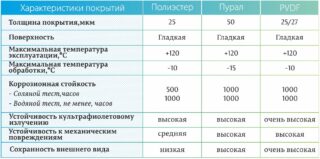The polymer layer on the sheets of corrugated board is a protective coating with decorative value. Painting not only changes the aesthetic perception of the material, but also extends the service life by protecting it from corrosion. The profiled sheet with a polymer coating increases the service life of a roof or other structure up to 45 - 50 years. Such durability is attributed to the achievements of technology, since galvanized profiled flooring was previously used, which worked without destruction in 2 times less time.
Production technology
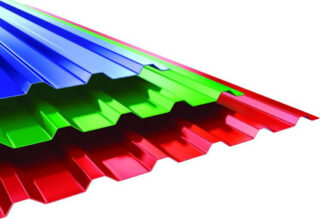
A metal profile with a high-quality polymer coating is made on rolling mills from coiled steel. The quality of the production equipment comes to the fore, since the protective film is thin and easily damaged during pressing. The finished profiled sheet is rarely painted due to its complex shape, which prevents uniform application.
Production includes stages:
- galvanizing iron to obtain anti-corrosion protection;
- passivation of the applied zinc layer (reproduction of the oxide film);
- primer to improve adhesion of layers;
- surface polymerization (painting, varnishing);
- coating with a protective compound.
The thickness of the polymer film is 25 - 200 microns, the value depends on the type of polymer and the purpose of using the profiled sheet. On the front surface, high-quality substances are often used, on the back side, special protective varnishes are used.
Specifications
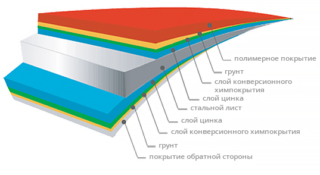
The properties of the profiled sheet depend on the structure of the steel and its thickness at the base, the useful width of the sheets is determined by the height and width of the waves on the surface of the strips. Galvanized corrugated sheeting with polyester coating is a continuous multilayer material, the number of layers differs from 3 to 10. The properties of the films depend on the thickness and chemical composition.
The application technology is regulated in accordance with the standards:
- galvanized cold-rolled steel by electrolytic deposition - GOST 14.918 - 1980 and TU 14.1.4695 - 1989;
- steel with a zinc layer and polymer protection - TU 14.1.4792 - 1980;
- aluminozinc layer on the surface of sheets - TU 14.11.247 - 1988;
- paint and varnish films - GOST 24.045 - 1994;
- powder coating - TU 1122.001.525 - 2003.
The material must contain a double-sided zinc-coated steel sheet. The more other layers and their thickness, the higher the technical indicators of the profiled sheet, the longer the manufacturer's warranty. Externally, the coating of a polymer profiled sheet differs in color, texture, produces materials for stone, velveteen, brick, wood, makes a shiny or matte surface.
Types of polymeric coatings for corrugated board
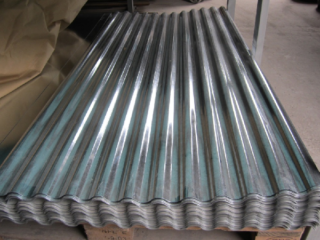
The material is produced without a protective paint layer, it is just a low-cost galvanized corrugated board. Its disadvantage is in a short operational period due to destruction from corrosion. The second type is represented by sheets with a protective polymer film. The price of such a corrugated board is higher, but the cost of purchasing and installing the material justifies itself.
Types of polymer coatings:
- acrylic;
- made of polyester;
- plastisol;
- pural;
- from polydifluorionate (PVDF).
Painted sheets are used for new coatings or renovation of existing ones. The material is painted in any color scheme according to the RAL color catalog. The layer of paint gives new protective possibilities and decorative perception. The coating is classified as chemically resistant films, it is not afraid of the action of alkalis, solvents, lubricants, gasoline, and other aggressive components.
Polymer profiled sheeting is classified as a material that is harmless to health, since toxic liquid substances and solvents are not used during production.
Acrylic
This is the name for polymers based on a combination of methacrylic and acrylic acid. It is based on synthetic fibers, dispersion particles of acrylic polymer. Such a coating is classified as an inexpensive and aesthetically pleasing type. The layer thickness is only 25 microns, therefore, the material is often placed on outbuildings, for example, sheds, garages, temporary fences.
Advantages of profiled sheet with acrylic:
- fire resistance;
- resistance to destruction from heat (up to + 120 ° С);
- stylish design performance;
- light weight, ease of installation.
The acrylic sheath is easily damaged by pulling, even when installed in the mounting position. Poor corrosion protection leads to delamination after 4 to 5 years. The same period is used to measure the resistance to burnout in the sun, after which the material fades.
Polyester
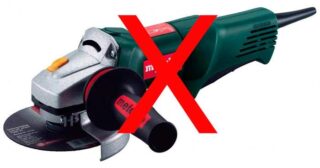
Also a common type of profiled sheet due to the low price. The thickness of the coating fluctuates in the range of 25 - 35 microns, despite this, such a film is elastic and does not crack. The thin shell is easily damaged during transportation, therefore, when purchasing, attention is paid to determining the integrity. When installing, use shoes with soft soles.
Positive properties of polyester profiled sheet cover:
- the ability to bend while maintaining the integrity of the top layer;
- durability;
- preservation of the original color for 20-25 years.
You cannot use a grinder to cut sheets in order to preserve the protective layer in this place. Flying sparks cause additional defects (burns) at the points of impact on the profiled sheet. In the place of paint damage, corrosion will not develop immediately - the galvanized film will protect it. Experts advise painting over the damaged areas with special compositions from spray guns.
Plastisol (polyvinyl chloride)
A polyvinyl chloride film with the addition of plasticizers is applied in a thick layer (200 microns). A material with such protection shows high resistance to mechanical damage and scratches. The considerable thickness provides reliable protection against aggressive atmospheres and harmful operating conditions. The layer allows you to make relief embossing on the surface of the material under the pattern of leather, wood, fabric.
Disadvantages of the material:
- small temperature range of application in tropical climates;
- quickly fade from ultraviolet radiation, so the material is painted in light colors that fade less and heat up less.
Decking with a polymer coating made of plastisol works well in northern regions with an unstable climate, the presence of frequent dust storms, and hail. Sheets are used in industrial areas, chemical plants, in places with an increased risk of mechanical damage.
Pural

The layer is a resistant film with a thickness of 50 microns based on polyurethane with the inclusion of polyamide, acrylic, modifiers. The wear-resistant shell will last at least 50 years; it is quite difficult to damage it.
Pural sheets are produced in two versions:
- matte;
- glossy.
The protective film on the front side is resistant to chemicals and acids. Pural profiled sheet is used in a maritime climate on the coast, where buildings are exposed to ultraviolet light, salty air, high temperatures, and wind. Sheets may lose brightness after 35 - 40 years, but only slightly.
The disadvantage of pural-coated corrugated board is that it is expensive compared to acrylic, PVC corrugated board.It is used in difficult conditions, if necessary, more often for roofs, facades. For fences, sheets with a pural layer are rarely used.
Polydifluorionate (PVDF)
Layer advantages:
- durability;
- resistance to UV rays, invariability of color throughout the entire period of work;
- temperature range of application - -60 ° - + 120 ° С;
- the ability to operate in a difficult maritime climate, in a chemically aggressive environment, in hazardous industries, along busy highways.
Produced with a shiny and matte surface, covered with a transparent varnish with a metallic sheen effect in copper or silver tones.
Differences in polymer coatings
Polyester and acrylic are considered the cheapest, but they differ in a low degree of protection and light damage when dragging sheets along the surface during installation. Matte and glossy types are almost identical in composition, but their properties are slightly different.
Matte coatings are rough, this type of surface scatters the rays of the sun, therefore fading less. The service life of a matte layer is 10% longer than a glossy one. On the roofs in the northern regions with a small amount of natural light, they put shiny varieties, and in the southern regions, matte sheets are used.
The PVDF layer with the metallic sheen effect is the most expensive, so its durability is used wherever it is most needed. It does not retain dirt on the surface, it cleans itself over time.
Choosing between galvanized and polymer profiled sheet
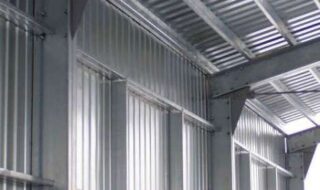
Painted and galvanized material is produced using a similar technology. Differences appear at the final stage of production. The statement that the coloring replaces the zinc layer is incorrect, the polymer layer complements the already applied coating.
Galvanizing is chosen for finishing fences, overlapping farm buildings on the site. In industry, waste material is placed on internal partitions, hangars are blocked, sheds are made. The fragility of galvanized profiled metal is not too important, since the production is regularly re-equipped, at the same time the premises are expanded or rebuilt.
Profiled sheet with a polymer layer is well suited for private construction, since it matters:
- duration of operation;
- beautiful exterior of the house;
- original landscape design.
The facades, finished with a profiled sheet with a stone pattern, resemble massive castles, the texture of the wood translates them into the category of wooden architecture. It is difficult to distinguish at a distance the unnaturalness of the material, since the color, the ornament is executed very realistically.

